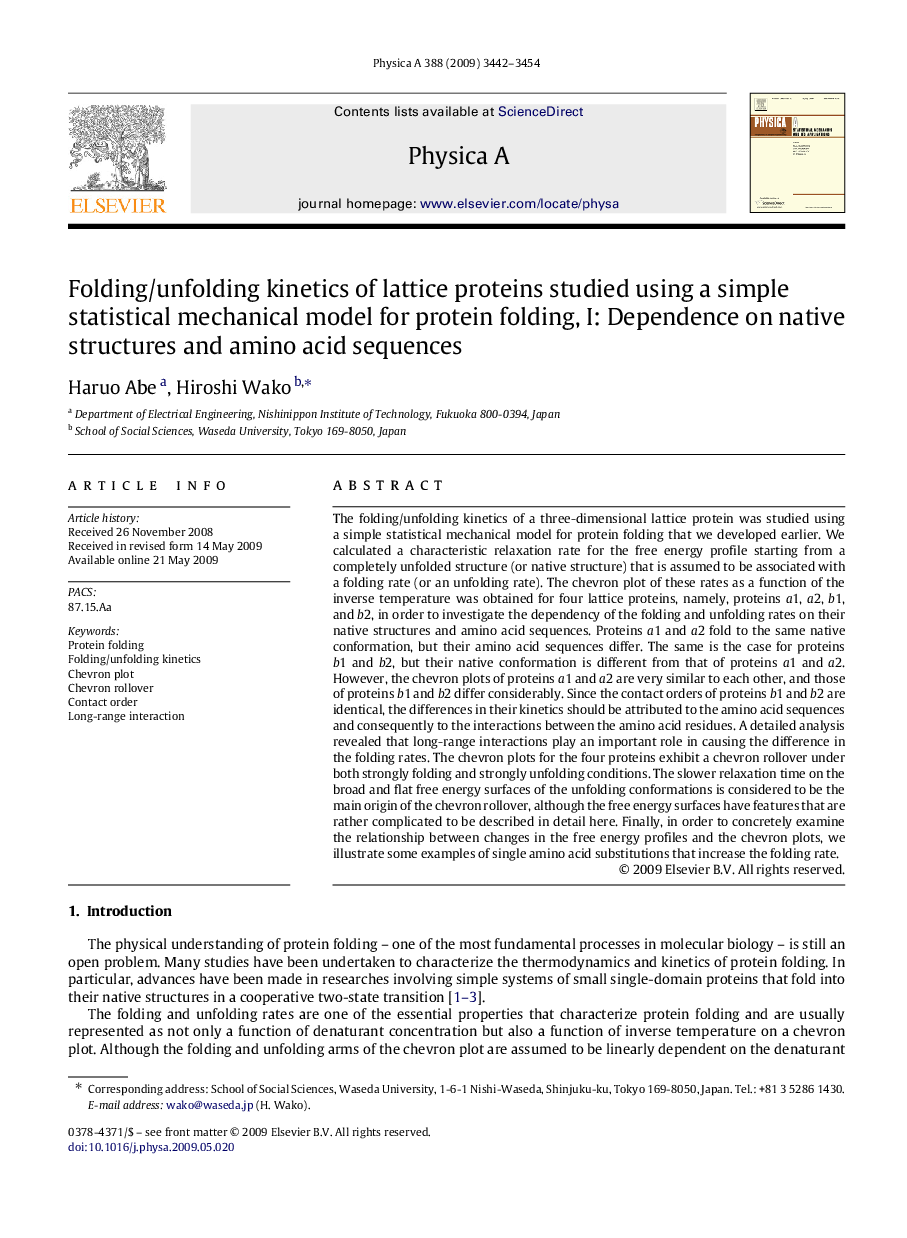| کد مقاله | کد نشریه | سال انتشار | مقاله انگلیسی | نسخه تمام متن |
|---|---|---|---|---|
| 976308 | 933108 | 2009 | 13 صفحه PDF | دانلود رایگان |
عنوان انگلیسی مقاله ISI
Folding/unfolding kinetics of lattice proteins studied using a simple statistical mechanical model for protein folding, I: Dependence on native structures and amino acid sequences
دانلود مقاله + سفارش ترجمه
دانلود مقاله ISI انگلیسی
رایگان برای ایرانیان
کلمات کلیدی
موضوعات مرتبط
مهندسی و علوم پایه
ریاضیات
فیزیک ریاضی
پیش نمایش صفحه اول مقاله

چکیده انگلیسی
The folding/unfolding kinetics of a three-dimensional lattice protein was studied using a simple statistical mechanical model for protein folding that we developed earlier. We calculated a characteristic relaxation rate for the free energy profile starting from a completely unfolded structure (or native structure) that is assumed to be associated with a folding rate (or an unfolding rate). The chevron plot of these rates as a function of the inverse temperature was obtained for four lattice proteins, namely, proteins a1, a2, b1, and b2, in order to investigate the dependency of the folding and unfolding rates on their native structures and amino acid sequences. Proteins a1 and a2 fold to the same native conformation, but their amino acid sequences differ. The same is the case for proteins b1 and b2, but their native conformation is different from that of proteins a1 and a2. However, the chevron plots of proteins a1 and a2 are very similar to each other, and those of proteins b1 and b2 differ considerably. Since the contact orders of proteins b1 and b2 are identical, the differences in their kinetics should be attributed to the amino acid sequences and consequently to the interactions between the amino acid residues. A detailed analysis revealed that long-range interactions play an important role in causing the difference in the folding rates. The chevron plots for the four proteins exhibit a chevron rollover under both strongly folding and strongly unfolding conditions. The slower relaxation time on the broad and flat free energy surfaces of the unfolding conformations is considered to be the main origin of the chevron rollover, although the free energy surfaces have features that are rather complicated to be described in detail here. Finally, in order to concretely examine the relationship between changes in the free energy profiles and the chevron plots, we illustrate some examples of single amino acid substitutions that increase the folding rate.
ناشر
Database: Elsevier - ScienceDirect (ساینس دایرکت)
Journal: Physica A: Statistical Mechanics and its Applications - Volume 388, Issue 17, 1 September 2009, Pages 3442-3454
Journal: Physica A: Statistical Mechanics and its Applications - Volume 388, Issue 17, 1 September 2009, Pages 3442-3454
نویسندگان
Haruo Abe, Hiroshi Wako,